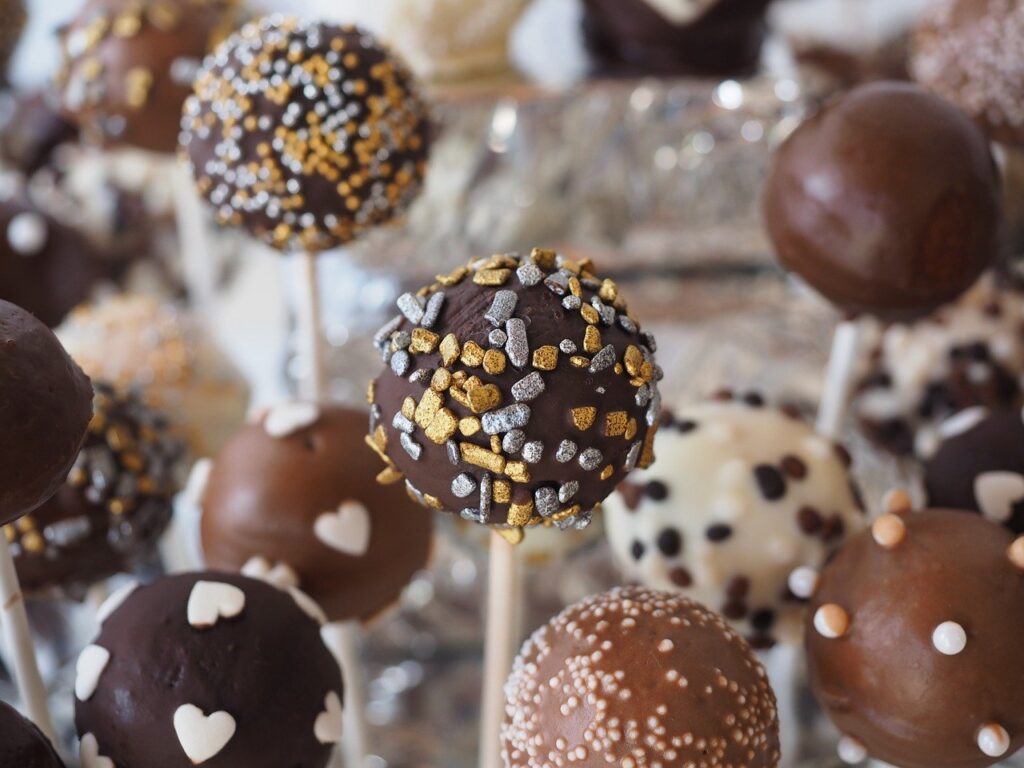How to taste chocolate correctly?
Tasting chocolate is not the same as eating it: you have to feel all the flavor nuances, the aroma of the cacao beans, and other additives like vanilla and sugar. The flavor of the bean depends on the variety, where it was grown, and how it was processed. However, tasting can take place not only in stores or cafés, but also virtual chocolate tasting is gaining popularity.
In order to taste a good slice of chocolate, it’s best not to eat anything beforehand. After sweet foods, chocolate may seem bitter, and after bitter foods, it may seem too sweet or tasteless.
That’s why we shouldn’t try more than six kinds of chocolate at a time because the sensitivity of our taste buds dulls very quickly, and we stop feeling the nuances of taste.
How to discover the taste of chocolate?
The chocolate taste reveals itself when it begins to melt in your mouth. To make the heating process go faster, you can leave the chocolate lying at room temperature for a while and then taste it. Another trick is to drink a couple of sips of warm water beforehand.
After putting a piece of chocolate in your mouth, wait a little while until it starts to melt. That way you can understand why chocolate tastes so good and also feel not only the flavors but also the texture. The thawed chocolate should be smooth and soft, but not rough. If it contains a lot of cocoa butter, it will coat your mouth as it melts. Then start chewing slowly, enjoying every second.
What does chocolate taste like?
Milk chocolate should taste soft and creamy. And, dark chocolate tastes brighter than milk chocolate. You should taste warm, earthy, nutty tones.
Chocolate contains more than 1,500 shades of flavor. Just like the notes in wine or a good perfume, the palette of chocolate’s aroma and flavor make up a unique bouquet, with notes that blend and nuance each other.
Equally important is what type of cocoa bean is used in the blend – criollo, forastero, or trinitario, how the fermentation and roasting process takes place, and in what climatic conditions the cocoa beans grow in. All of these parameters give the cocoa bean its own distinctive characteristics. For example, cocoa beans that grow on the coast of Venezuela have a creamy flavor, while beans that grow in the mountains usually have a nutty flavor.
Also, some types of milk chocolate have a distinct taste of caramel, which appears in the process of caramelization of milk in the process of making chocolate. If you feel а taste of chocolate notes of coconut, cinnamon, or chili pepper – you are not mistaken. All of these notes are present in chocolate. You can also taste notes of pineapple, orange, cherry, and cloves.
Chocolate Impressions
If you want to become a real chocolate connoisseur, think about a notebook in which you will write down your impressions of all your tastings. Include tasting dates, names of brands and types of chocolate (milk, bitter), and any other available information (region of origin, percentage of cocoa content, additional ingredients, and flavors). You could call it a chocolate taste test. It makes sense to develop your own evaluation system – either a point system, e.g. from 1 to 10 or an evaluation system – bad, good, very good, and excellent.
During the chocolate taste test, note the taste characteristics of the chocolate (sweetness, bitterness, sourness, fruitiness, aftertaste, etc.) and the texture of the chocolate (velvety, creamy, waxy, etc.). Also, note the sequence of flavor and aroma notes, since each chocolate has an initial, middle and final note. You can also note how long the main flavor lasts and what kind of aftertaste it leaves behind.
